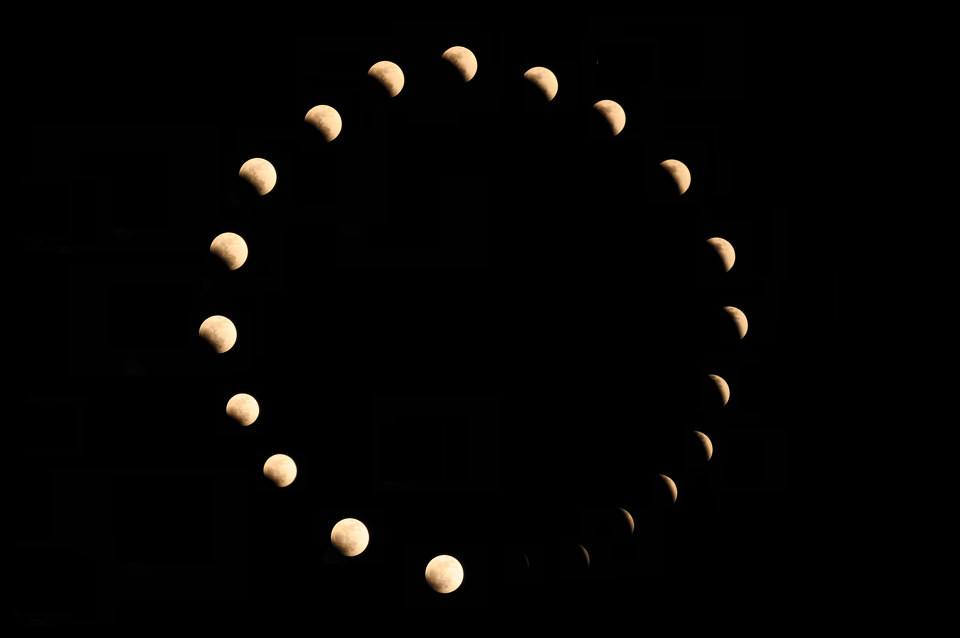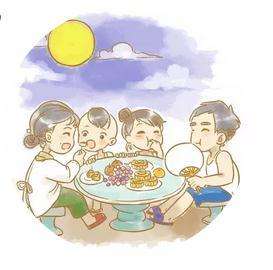The moon has always played an important role on the Mid-Autumn Festival, when people admire the moon, have moon cakes and sit around a round table shaped like a full moon. Here are three aspects which help to have an insight into the moon: poetry, image and custom.
Watery-Prelude-Melody
How rare the moon, so round and clear!
With cup in hand, I ask of the blue sky,
“I do not know in the celestial sphere,
What name this festive night goes by?”
I want to fly home, riding the air,
But fear the ethereal cold up there,
The jade and crystal mansions are so high!
Dancing to my shadow,
I feel no longer the mortal tie.
She rounds the vermilion tower,
Stoops to silk-pad doors,
Shines on those who sleepless lie.
Why does she, bearing us no grudge,
Shine upon our parting, reunion deny?
But rare is perfect happiness--
The moon does wax,
the moon does wane,
And so men meet and say goodbye.
I only pray our life be long,
And our souls together heavenward fly!
– Written by SU Shi(1037-1101),
Translated by LIN Yutang(1895-1976)

SU Shi
Far away from his brother SU Zhe, SU Shi wrote down this poem on this special day – the Mid-Autumn Festival. “How rare the moon, so round and clear” and how rare people reunited once separated those days without modern conveniences? This beginning is strong and emotional, cutting straight into the theme of missing someone. Then here comes the wine, a great way to consume grief. The poet gazing at the moon, his imagination blossomed. He became curious about “What name this festive night goes by”. He also dreamed about peeking at the jade and crystal mansions and dancing with his shadow to elude affairs in the human world.
However, the moonlight followed, through the vermilion tower and silk-pad doors, for his missing was endless, which is also why the poet was sleepless. “Shine upon our parting, reunion deny.” – The moon is supposed to be round when people reunite. And there lies the beauty of the poem – contradiction – highlighting the poet’s strong emotion. Finally, the poet let it go anyway, for it is a general rule that “The moon does wax, the moon does wane. And so men meet and say goodbye.” Eventually, “I only pray our life be long. And our souls together heavenward fly”, expressing the poet’s best wishes.
The image of moon
“The moon does wax, the moon does wane,
And so men meet and say goodbye.”

Changes of the moon
One of the most important images of moon, from Chinese people’s perspective, is nostalgia. When people watch the moon, they start to miss their family and friends, who may be far away, and recall the happy times they spent with them. Of course, the moon does wax and wane. While waxing means that the moon is about to be in its full form – at its best – symbolizing life is treating a person well and everything comes to a circle; waning, on the other, means that the moon becomes smaller after being round and full, symbolizing the transience of happiness in life. Just as waxing and waning are inevitable, so are the reunion of the beloved and departure in the end. All good things come to an end, but then good things start all over again – that’s the way of life. What people do is simply to seize the day – the Mid-Autumn Festival – when the moon is full to celebrate the reunion.
Admiring the moon
When it comes to Mid-Autumn Festival, admiring the moon is often the first tradition comes to mind. Indeed, it enjoys a long history and it is an indispensable activity of the Mid-Autumn Festival.
During the Wei and Jin Dynasties, people began to admire the moon on the Mid-Autumn Festival. But it wasn’t a custom yet. Later in the Tang Dynasty, as more and more poems concerning the moon were written, it gained its popularity gradually. Eventually, admiring the moon became a traditional custom of the Mid-Autumn Festival in Song Dynasty.
As for the reason why people would admire the moon on this particular day, many explanations from different aspects are given. Some ancient poets described the special weather condition on the festival in their poems, which showed the natural reason of the phenomenon. OUYANG Zhan, a poet of the Tang Dynasty, told his own understanding in a poem called Wanyue (meaning “play with moon”), which is considered reasonable nowadays. It is said that in the middle of autumn, the cool and dry air from the north pushed the warm and wet flow to the south, resulting in the decline of the steam and cloud. Therefore, the climate is clear and fresh while the moon shines brightly.

The family admired the moon together
Nowadays, as a traditional custom of the Mid-Autumn Festival, admiring the moon is an important activity that day. Family members will gather together and admire the moon, which is also a symbol of reunion. It is not hard to see Chinese people’s deep love for the moon and reverence for nature. This emotion has been written into their genes, and ingrained in their blood. When the time comes, certain elements will arouse it from within everyone.

